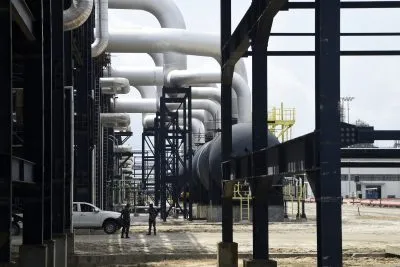Kenya is in line to become a hub for carbon capture and storage, after Swiss company Climeworks announced it is looking into options for a large-scale facility in the country.
Climework’s possible entry into the country is a major boost for Kenya’s ambitions to become a regional leader in carbon capture. Climeworks has significant credentials in the industry, having already developed the world’s first major commercial direct air capture and storage facility in Iceland. The firm raised 600m Swiss francs ($650m) from major global investors in its most recent funding round.
According to the UK’s National Grid, carbon capture involves the capture of CO2 emissions from industrial processes, such as steel and cement production, or from the burning of fossil fuels in power generation. This carbon is then transported from where it was produced, via ship or in a pipeline, and stored deep underground in geological formations.
Daniel Nathan, chief project development officer at Climeworks, told African Business that Kenya provides “a rather unique opportunity”. The East African Rift Valley offers ideal conditions for storing carbon in its mineralised form, he says. And Kenya’s geothermal resources provide a source of renewable power for DAC (direct air capture) machines, along with the heat needed for the machines to operate.
Separately, the East African nation is also set to host the world’s second largest pilot for direct air capture (DAC) technology. Project Hummingbird, led by startup Octavia Carbon, will aim to capture 1,000 tonnes of carbon annually from next year. The captured carbon will be mineralised by Octavia’s partner company, Cella Mineral Storage, and stored in the vast chasm of the Rift Valley for millions of years.
Read more about carbon markets in our special Road to Cop28 dossier.
Mineralisation
Climeworks is exploring opportunities in Kenya alongside Great Carbon Valley, a company seeking to establish industrial parks in Kenya that would contain DAC facilities and rely on geothermal energy.
Kenya is already the world’s seventh-largest producer of geothermal power, although it still has significant untapped potential.
The growth of Kenya’s DAC industry is good news for geothermal developers. DAC companies would be major off-takers of electricity and heat generated by geothermal energy, which would make geothermal projects more financially viable. Carbon capture can therefore “be a catalyst for building some of the capacity that could be available,” says Nathan.
Nathan says that Great Carbon Valley will play a vital role in helping Climeworks evaluate the opportunities and prepare for market entry. The firm will also help Climeworks to select a partner for mineralising the carbon that it captures.
Mineralisation techniques involve speeding-up the process of turning carbon dioxide from a gas to a carbonate mineral. This process, left to nature, would take many thousands of years but Climeworks’ partner Carbfix says it has achieved this in less than two years at its project in Iceland. CO2 is injected into water and stored in basalt rock – a substance found in abundance in the Rift Valley.
Other carbon capture projects around the world involve the utilisation of captured CO2. Indeed, CO2 has a wide variety of uses, including in bottling plants, in greenhouses, or in the production of e-fuels. While Nathan does not dismiss the possibility that Climeworks could supply CO2 for a project of this kind, he stresses that the company’s primary goal is to store captured carbon.
In doing so, Climeworks is able to raise revenue through the sale of carbon credits. Credits from DAC are far more expensive than credits sold by projects that capture carbon through tree planting. However, the amount of carbon captured and mineralised by companies like Climeworks can be easily quantified – and buyers of carbon credits can be assured that mineralised carbon will be stored securely for a virtually infinite amount of time. Climeworks announced last month that it is working to achieve certification under the standard developed by verification provider Puro.earth.
A final decision on whether to invest in Kenya is still a “few years” away, Nathan says. The company needs to find a suitable site for capturing and storing carbon, where either geothermal energy or another renewable power source is available. Nathan adds that navigating the permitting process and securing access to finance will also be key challenges.
But he is confident that obstacles can be overcome, enabling Kenya to benefit from the advantages bestowed by geology. “We are optimistic that the next couple of years will give us all these answers,” he says.
Want to continue reading? Subscribe today.
You've read all your free articles for this month! Subscribe now to enjoy full access to our content.
Digital Monthly
£8.00 / month
Receive full unlimited access to our articles, opinions, podcasts and more.
Digital Yearly
£70.00 / year
Our best value offer - save £26 and gain access to all of our digital content for an entire year!

 Sign in with Google
Sign in with Google 



